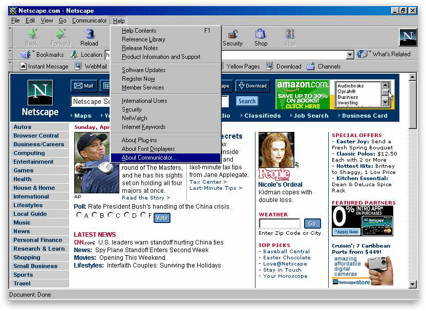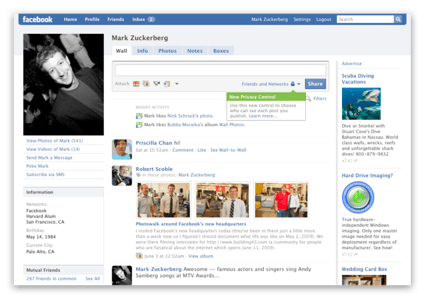
Web1 (1990-early 2000s) was read-only. People consumed static webpages that they navigated to from directories like Yahoo. Web1 was built on open-source protocols like HTTP.
In general, Web1 is the term that is commonly used to refer to the earliest versions of the internet. From its origins at the Defense Advanced Research Projects Agency (DARPA) to the inter-connected global network linking every entity on earth, Web1 was the first iteration of the internet as we know it today.
For those who were around during the days of grunge rock, big hair, and the first wireless cellular phone, you may remember that your first experience on the internet required a dial-up connection – leveraging a modem with a speed of 56kbit/s (which you can basically simplify as – very, very, slow). If you were lucky, you were able to go online from the comfort of your home – but most likely, it cost your family the only phone line available in the house, meaning that no phone calls in or out could be connected while someone was online.

Once online, the experience was relatively uninteresting (especially compared to today’s standards). Web1 web pages were static, and hosted on web servers run by Internet Service Providers or free web hosting services. By and large, internet users could not interact with any of the content which was viewed online. Participants could only read what was being displayed, and nothing more. For this characteristic alone, Web1 is sometimes referred to as the “
read-only
” web – succinctly summarizing the limitations and characteristics that this first version of the internet brought to the people.
Looking back at Web1 webpages now (which is possible, by the way, via the Internet Archive – Wayback Machine), and it quickly becomes obvious that most pages were nothing more than some text and a few images – made possible by very simple HTML code by today’s standards.
As we all know, this time-period in the world’s digital history did not last long, and technology soon enabled us to evolve from Web1 to Web2. While there isn’t much to say these days about Web1, it did raise the first generation of internet adopters – and it did provide the foundational blocks for what the internet would eventually become.
Like most big changes in history, this process was gradual. Exactly where Web1 ends and where Web2 begins cannot be narrowed down to a single day – as the evolution of the changes occurred over an extended period of time. It is though, generally accepted that Web2 more or less came to life at the turn of the century (around 1999) and from there, evolved into the internet that we know and use today.
Web2 (early 2000s-today) is read and write. People create and consume content on the social platforms that we're all familiar with. In web2, tech giants extract value from users by sitting in the middle. Web2 is built on client-server architecture where users are the client, and companies control the servers.
Web2 is what we know as today’s internet. It is the online space that the entire world has grown up in, regardless of age, geography, or social class. “Born” around 1999, Web2 has brought us some of our favorite services – which with each subsequent year, we begin to view less and less favorably. When history reflects on the companies and services that defined the Web2 era, they will undoubtedly think of Facebook, Amazon, Google, YouTube, Instagram, TikTok, and more.
Web2 moved the internet from a read-only digital world to an interactive one – or what can be somewhat simplified by the expression “read/write” internet. AfterY2K, internet users slowly began to find that not only could they receive information on the web pages which they were viewing, but they could also send information to the web servers in an effort to obtain more targeted information which were suitable for their needs.
As an example, in the Web1 world, a user might have been able to find a map of their country on the internet. If they were lucky, perhaps there would also be a map of the city which they lived in – which could be referenced when that person wanted to find the shortest route to get between Point A and Point B. In the Web2 world, users would discover Google Maps – which has singlehandedly made obsolete the requirement for anyone to have any sort of directional sense. With Google Maps, users could enter the address for Point A, enter the address for Point B, send a request to the Maps server to obtain the best route to take – and receive a customized route from Google to navigate to the desired destination.

In another scenario, Web1 enabled the encyclopedia company Britannica to make available their entire database of encyclopedic information on the internet. However, this information quickly became outdated (even within the year). When we consider events like covid-19, which would not have existed as an entry in a 2019 encyclopedia, we likely would have needed to wait nine months before we could find any information on it in the 2020 encyclopedia. With Wikipedia – which serves as Web2’s encyclopedia, an entry for covid-19 was created on February 5th, 2020 – and has been updated more than 500 times since the initial entry.
It is easy to see how dynamic the web has become since the days of Web1. Instead of only being able to absorb information, the internet became interaction based. Users could interact via search queries, comments, posts, and more. As a result, Web2 is often referred to as the “Social Web”, allowing for a level of socialization and interaction which simply did not exist before in the online world.